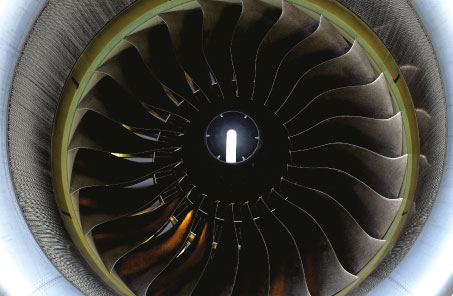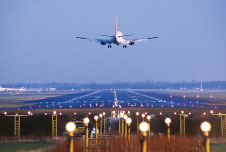
The new noise standard means that from 2017 new large civil aircraft types must be at least 7 EPNdB (Effective Perceived Noise in Decibels) quieter than the current standard. It will apply to smaller aircraft types of less than 55 tonnes from 2020. © Airbus
Europe’s airports are committed to working constructively with their local communities to address noise concerns, and to demonstrate that the industry takes its noise impact seriously. It is only by doing this that they will earn their licence to grow.
ACI EUROPE supports the adoption of a new noise standard that is ambitious yet realistic. This new standard, which will be Chapter 14 of Annex 16 to the Chicago Convention, means that from 2017 new large civil aircraft types must be at least 7 EPNdB (Effective Perceived Noise in Decibels) quieter than the current Chapter 4 standard. It will apply to smaller aircraft types of less than 55 tonnes from 2020.
Chrystelle Damar, Manager: Environmental Strategy & Intermodality, ACI EUROPE, commented: “We welcome the decision made in February 2013, as both the timing for the adoption of the standard and its level of ambition reflect the progress of the manufacturing industry to deliver quieter and quieter aircraft. We have to bear in mind that ICAO standards do not force progress, but are the most effective instrument to secure technological progress and avoid backsliding of the technology available on the market.”
Airbus is similarly supportive of the new standard. It has, over the past 40 years, put significant effort into reducing noise at source, and actively contributed by providing technical assessments and recommendations, which helped inform the CAEP9 proposal. “At Airbus, innovation and technology are key to providing aircraft that generate fewer emissions and less noise while carrying a maximum payload over the mission range. All Airbus development aircraft – NEO and A350 XWB – are designed to be compliant with the new noise standard,” explained Thierry Nowaczyk, Environmental Strategy & Policy Manager, Airbus. “Regarding the long life-cycle of our industry, 2017 is taking place today in our design office and production centre, therefore Airbus continues developing new aircraft solutions to improve the operational noise of aircraft. Several functionalities are available on new aircraft, such as the Automatic Noise Abatement Departure Procedure (NADP) that optimises the thrust and flight path to reduce the noise over populated areas.”

The ninth meeting of ICAO’s Committee on Aviation Environmental Protection (CAEP) in February agreed a new noise standard for newly certified aircraft types.
Balanced Approach
The reference document for aircraft noise management around airports is ICAO’s Balanced Approach, which was adopted by Member States in 2001. It requires competent authorities to assess the effects of four different noise management measures, prior to adopting operating restrictions, on an airport-by-airport basis.
For airport operators, adoption of this new Chapter 14 noise standard essentially means two things. Firstly, it will impact on the fleets being operated at Europe’s airports, as the natural fleet replacement rate will enable the integration of more and more aircraft certified according to Chapter 14, until all in-service aircraft are at least Chapter 14 compliant. Secondly, it means that the first element of the Balanced Approach – reduction of noise at source – is taken into account.
Nowaczyk explained that the A380 was given an award for its quiet operations by the UK Noise Abatement Society in 2012. With the A380, Airbus introduced a specific noise optimisation feature into the aircraft flight management system. “This is programmed with the specific airport, aircraft and meteorological parameters at the very moment of take-off, and provides the lowest possible noise levels over ground,” said Nowaczyk. “The A350 XWB, the aircraft with the leading environmental performance in the long-range market, will have its first flight in mid-2013 and is up to 16 decibels below the current required standard.”
It is important to note that airport operators are reliant on their partners to implement the measures of the Balanced Approach. In terms of reduction of noise at source, the adoption of a new noise standard is a decision made by ICAO Member States, while fleet replacement strategies are designed by airlines. For land use planning, measures are taken by local authorities and for noise abatement procedures, these are the result of cooperation between airlines, air traffic management and airport operators. Operating restrictions are determined by local or national authorities.
This highlights the need for a comprehensive and collaborative approach to achieving effective aircraft noise management around airports, and the new ICAO noise standard is a major indication of how the aviation industry is proactively addressing its environmental impact. The standard will be presented for further consideration by the ICAO Council after formal State consultation.







